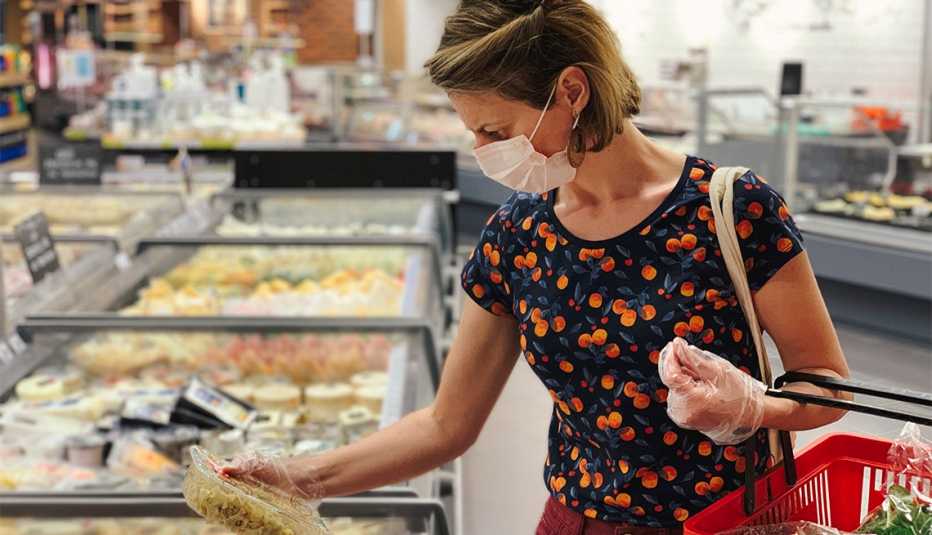Staying Fit


Whether you are grocery shopping for yourself or helping friends and family in need, here's what experts say about staying safe while going in and out of stores.
"Exhausting all other options is really important here,” says Ben Chapman, a food safety specialist and professor at North Carolina State University.


AARP Membership— $12 for your first year when you sign up for Automatic Renewal
Get instant access to members-only products and hundreds of discounts, a free second membership, and a subscription to AARP the Magazine.
Chapman urges older adults and those at higher risk of complications from COVID-19 to take advantage of alternatives to in-person shopping trips, like asking friends or family to run errands, using a grocery delivery service, or opting for curbside pickup.
Some major pharmacy chains have waived fees for in-home delivery services, and a growing number of mutual aid organizations, among them AARP Community Connections, pair those in need with volunteers who can deliver groceries and other supplies.
Plan your visit
If you need to venture out, “this is not the time to do impulsive shopping,” says June McKoy, M.D., associate professor of medicine at Northwestern Medicine. “Make your list and go in like a Marine goes in: Parachute in, do your business, parachute out."
Part of that approach means visiting stores during off-peak hours when fewer customers are present, McKoy says. This helps to maintain social distancing, like staying 6 feet away from others in public as recommended by the Centers for Disease Control and Prevention (CDC), which is intended to slow the spread of the outbreak,
The same goes for pharmacies, where McKoy suggests arriving early in the morning to beat crowds. Now's also the time, she says, to ask your health care provider about getting a 90-day supply of medications to limit future outings for refills.
For grocery trips, Chapman recommends shopping at stores that have started implementing precautionary measures of their own, like limiting the number of customers allowed inside the store at one time, putting up markers that keep people properly spaced in line, or installing panels between customers and cashiers at checkout. Many chains now offer special hours for older shoppers, typically in the morning.
In the store
The CDC encourages all Americans to wear cloth face masks that cover their nose and mouth in public settings like grocery stores and pharmacies. This does not replace the need to keep your distance from others, the agency says, but is an additional measure to help slow the spread of the disease.

































































More on health
This Is What a Coronavirus Infection Feels Like
CDC expands list of COVID-19 symptoms and emergency warning signs
Coronavirus and Older Adults: Your Questions Answered
A CDC official explains why more risk comes with age from COVID-19Top Health News and Guidance for People 50 and Over
Read the latest health news on healthy living, wellness, conditions and treatments, mental health and prescription drugs.